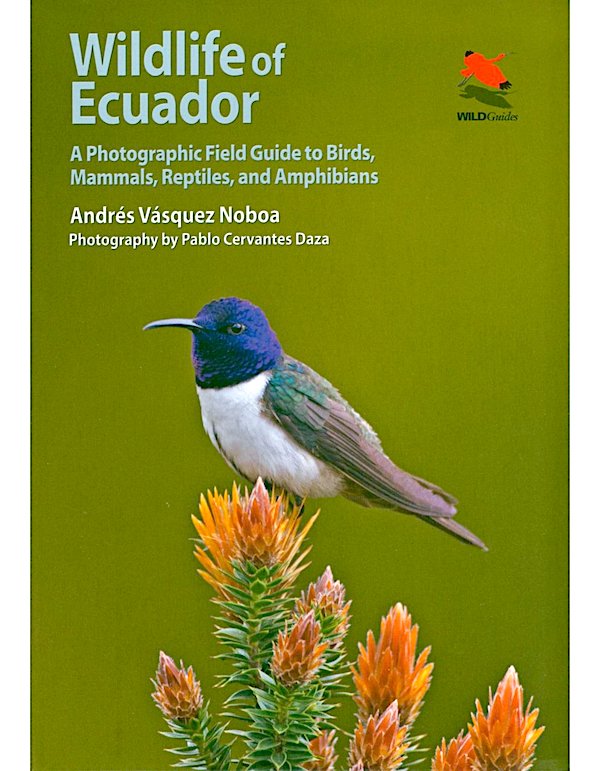By Andrés Vásquez Noboa, illustrated by Pablo Cervantes Daza | Princeton University Press | Paperback | April 2017 | 286 Pages | 341 Distribution Maps | 411 Colour Photographs | ISBN: 9780691161365

The Publisher’s View: Mainland Ecuador’s spectacular wildlife makes it a magnet for nature tourists, but until now there hasn’t been a go-to, all-in-one guide geared to the general reader. With this handy and accessible guide, visitors now have everything they need to identify and enjoy the majority of birds and animals they are likely to see.
Written and illustrated by two of Ecuador’s most experienced nature guides and photographers, Wildlife of Ecuador covers more than 350 birds, mammals, amphibians, and reptiles. It features over 400 stunning colour photographs and includes a range map for each species, as well as a brief account of the country’s natural history and biogeography. With its extensive coverage, attractive and easy-to-use layout, beautiful photographs, and nontechnical text, this is an essential guide for anyone who wants to explore the natural wonders of Ecuador.
The Authors:
Andrés Vásquez Noboa works as a guide for Tandayapa Bird Lodge and Tropical Birding Tours in his native Ecuador, as well as in Peru, Brazil, and Argentina. An active promoter of birding and conservation, he has co-written six previous books on the wildlife of mainland Ecuador and Galápagos.
Pablo Cervantes Daza works as a nature and photography guide for Tropical Birding Tours and for Capturing Nature Tours, leading tours and workshops in his native Ecuador, as well as in Brazil, Costa Rica, Mexico, South Africa, and Madagascar.
Fatbirder View: Its difficult to really place this book in its rightful niche. The publishers say it is “a go-to, all-in-one guide geared to the general reader”…who is this ‘general reader’. In most places one might think of a local resident with an interest in, rather than passion for nature. But such a resident would surely want something geared to their locality. Outside of the tropics most places have a relatively few vertebrates, but Ecuador is incredibly wildlife rich and each of its geo-faunal zones are packed with unique creatures the book won’t cover. So, this general reader must be a visitor to the country wanting to know what they saw on their trip. I’m sure there are such general visitors, but most I hazard, would have a focus on particular zoological orders.
For birders, the book is just nowhere near comprehensive enough. Were I considering this publishing project, I would perhaps leave out the birds entirely (there are a number of comprehensive bird fieldguides) and add in some of the amazing insects, or at least some common Coleoptera, Odonata and Lepidoptera. Other specialists will no doubt be disappointed by the fairly thin information. As a general visitor I would be interested in which snake are venomous, but surely I would also want to know about the toxicity of some frogs.
I don’t want to be over critical as there is still a great deal here of wide interest and plenty of information. The photographs, although rarely stunning (on this scale it’s not surprising) are never poor quality either. What the book lacks in breadth and depth it gains in portability.
In short the book deserves an audience, but I’m not sure quite who, nor how large that audience is.
Fatbirder
